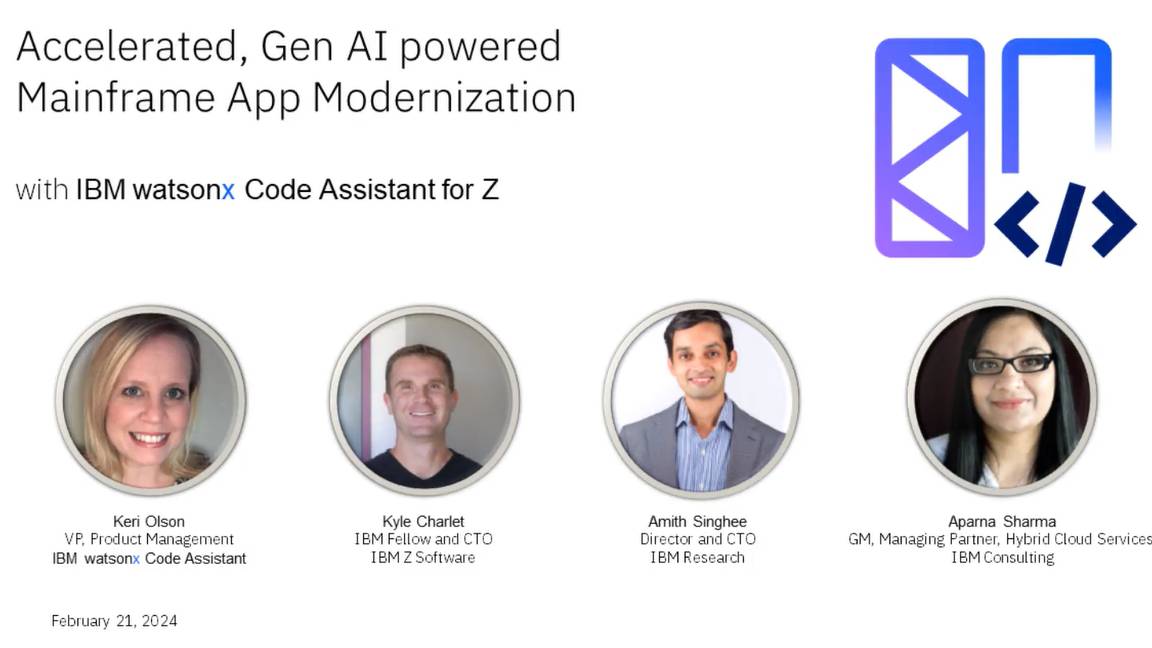Bridging the AI trust gap in business
Learning and training opportunities alongside better employee involvement in implementation can alleviate the AI trust gap among workers


The question of whether AI assistants will become our co-workers, or even replace our jobs, is the subject of fierce debate around the water cooler.
Businesses are warming to the idea of AI in the workplace. According to a survey by Workday, 62% of 1,375 business leaders, including C-level executives, welcome the use of AI in the workplace. However, employees are less accepting, with just 52% willing to welcome it, while only 55% believe their employer would implement AI in a safe and trustworthy manner.
Employees are dealing with a twofold challenge. They’re worried their employer may choose to adopt AI to eliminate their jobs. And, even if they don’t, there is concern that AI may be unwittingly introduced in a way that weakens or impacts their roles.
There’s clearly anxiety around the use of AI in the workplace, a situation not helped by the fact that some employers know that AI can be transformative but are unsure of how to go about deploying it.
“This discrepancy between recognizing AI’s importance and taking concrete steps to adopt it could stem from AI’s status as an emerging technology. But a more likely explanation is a lack of trust and understanding regarding its capabilities and limitations,” says Catherine Wilks, senior director at business transformation consultancy Slalom.
So how can leaders bridge the AI trust gap? The answer is a combination of transparent communication and learning and training activities around AI’s capabilities, limitations, and even ethical concerns.
Having a clear AI strategy
Wilks says “Every business – no matter what stage of their AI journey they’re on – needs to establish an AI strategy” and this needs to be communicated clearly to employees. Recent research by Slalom has found that although 89% of leaders consider AI a priority, only 61% are actively implementing it within their companies in a strategy.
Sign up today and you will receive a free copy of our Future Focus 2025 report - the leading guidance on AI, cybersecurity and other IT challenges as per 700+ senior executives
Employers should spell out why AI has been adopted. This should encompass how it aligns with the company’s goals, resonates with its values, how it’s being used in the workplace, and how it’ll benefit and support employees within their roles.
Being clear on how AI aligns with company values is particularly important. Younger workers, especially Gen Z, prefer to work for companies with a clear purpose and a culture of accountability and transparency. “An open environment means employees will be more likely to buy into your vision and actively contribute towards the company’s success,” says Gemma Collins, performance and development director at talent management consultancy Grayce.
The good news is that many younger workers may already be using AI outside the workplace, such as asking ChatGPT for book and music recommendations or to summarize articles. There is a natural curiosity to learn already instilled in them, says Collins, they just might need some persuading that AI in the workplace is in their best interests and that they’re not going to be replaced.
Providing learning opportunities
Older workers may be more skeptical of AI than their younger counterparts. This is because they “haven’t discovered, or been given the opportunity to discover, the huge avalanche of materials and tools out there to help them get to grips with AI,” says Mark Rodseth, vice president of technology for the EMEA region at global digital specialists CI&T.
The onus is therefore on leaders “to motivate employees to learn and familiarize themselves with the technology so they can succeed in their careers, both now and in the future,” Rodesth adds. Leaders need to be providing their employees with access to learning opportunities to improve their AI literacy.
Amid tight budgets, this access needn’t cost the earth. There are plenty of free crash courses and bootcamps that offer remote training programs which will cover the basics of AI and equip employees with the skills and experience needed. Some will offer certification too. While a certificate itself won’t make employees more trusting of AI, recognition of their achievement could help them to see the benefits of AI skills in the workplace.
The more employees learn, the more misconceptions about AI will be broken down. This should build confidence in the technology, resulting in employees being more comfortable with it being used in the workplace and placing more trust in it.
Involving employees in the implementation process
Beyond external courses and bootcamps, leaders should provide employees with the chance to grow their knowledge within the company, or, as Rodseth puts it “community opportunities”, where employees are encouraged to discuss their AI experiences and challenges with their colleagues. Lunch-and-learns, meetings around a meal paid for by the company, are becoming an increasingly popular professional development option.
RELATED WHITEPAPER

Nudging employees to engage in discussions and share any frustrations they might have is all well and good, but leaders need to use any suggestions employees might have to inform and improve how AI is being deployed in the workplace. Listening and taking on board what they have to say can improve AI’s effectiveness. Plus, leaders will then have success stories of how AI is assisting roles within the company to showcase to future workers who need convincing about its benefits.
Collins agrees with the need to involve employees in the implementation process. “You should solicit feedback on how to optimize AI implementation. This is a changing space and showing that you value the [opinions] of employees will further improve buy,” she says. “People support what they help to create.”
Rich is a freelance journalist writing about business and technology for national, B2B and trade publications. While his specialist areas are digital transformation and leadership and workplace issues, he’s also covered everything from how AI can be used to manage inventory levels during stock shortages to how digital twins can transform healthcare. You can follow Rich on LinkedIn.
-
 More transparency needed on sprawling data center projects, activists claim
More transparency needed on sprawling data center projects, activists claimNews Activists call for governments to be held accountable when data centers are pushed through without proper consultation
-
 Red Hat eyes tighter data controls with sovereign support for EU customers
Red Hat eyes tighter data controls with sovereign support for EU customersNews The company's new offering will see support delivered entirely by EU citizens in the region
